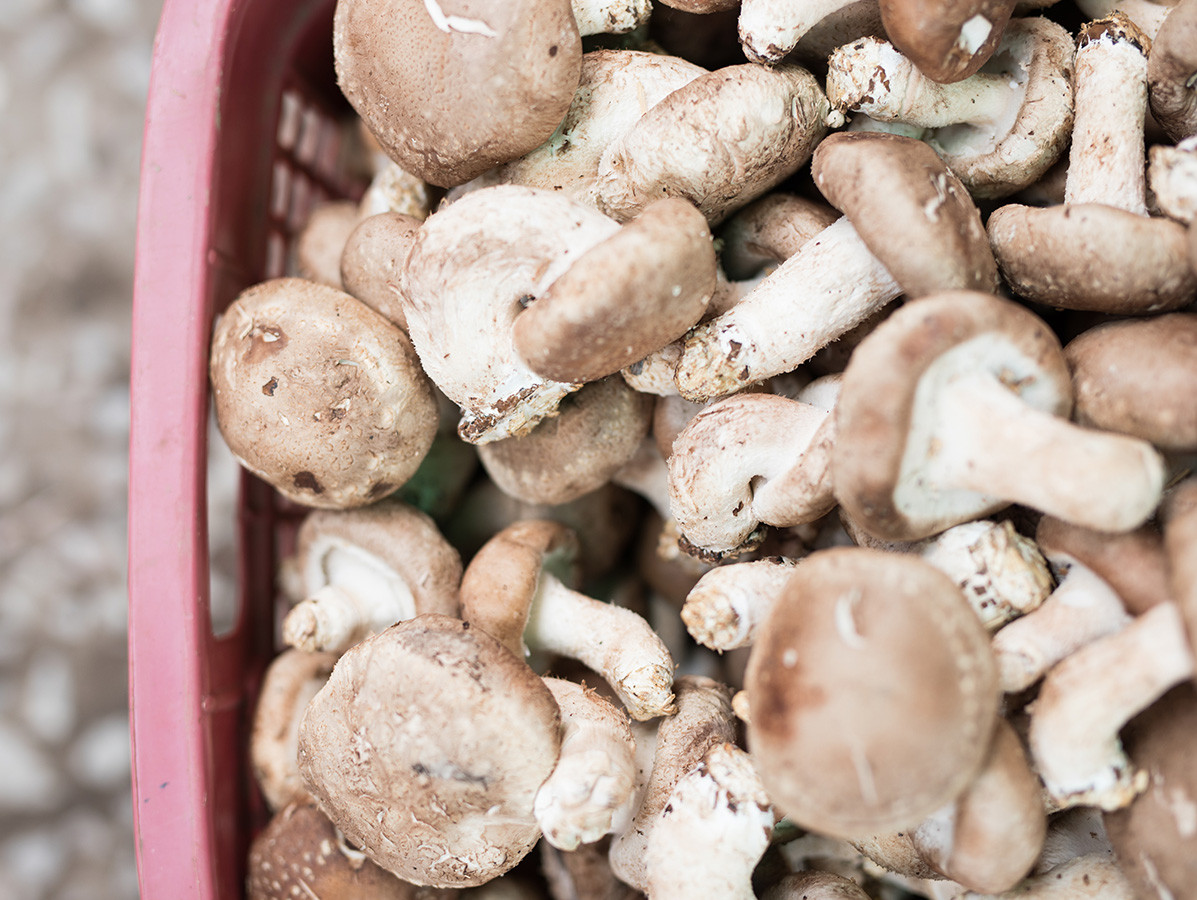
What remains after a mushroom harvest can be perfectly used as source of bioactive material. This is not only good news for mushroom growers, but it is also good news for companies producing medical supplies. The chitin contained in these by-product streams is available locally, but is also not of animal origin, thus avoiding allergic reactions in patients.
All this was covered in CHampITINE's final report. In this project, VITO and Inagro, together with stakeholders from the mushroom sector, investigated whether chitin and/or chitosan from these by-products could be used as bioactive components.
Chitin is mainly found in the hard parts of almost all molluscs, crustaceans and insects, but also in algae and ... fungi, or mushrooms. Chitin, chitosan, is used in animal feed, chemicals, agro-industry, cosmetics and pharmaceuticals. It has very interesting properties: it is antibacterial, antioxidant, anti-inflammatory, moisturising, UV repellent, it can form an edible, protective film and much more.
Plants treated with chitosan grow remarkably faster and strawberry plants sprayed with a solution containing chitosan are much more resistant to disease. Because of these qualities, there is increasing demand for chitosan.
The haemostatic effect of chitosan in bandages ensures that life-threatening bleeding can be stopped in minutes. Yet there is a problem: it is mainly manufactured in the Far East and the US, which makes us dependent, and it is almost all of animal origin. From shrimps, crabs and lobsters. If you use this on a patient who has a shellfish allergy, the patient is lost.
So the need for chitosan of non-animal origin that is also produced locally is high. The CHampITINE project looked at the possibilities of extracting chitin from mushroom by-products. Flemish mushroom growers provide 1,800 to 5,500 tonnes of residual waste streams that can serve as the basis for chitosan. Chestnut mushroom, oyster mushroom and white mushroom have a lot to offer.
The work is not yet finished, but the Flemish government also realises the potential. It has therefore decided to support the VALORCHAMP project within the Flanders circular call. This will further examine how mushroom residues can be upgraded as ingredients for food (spreads, flavour enhancers, protein sources) and bioactive components.
Source: VITO